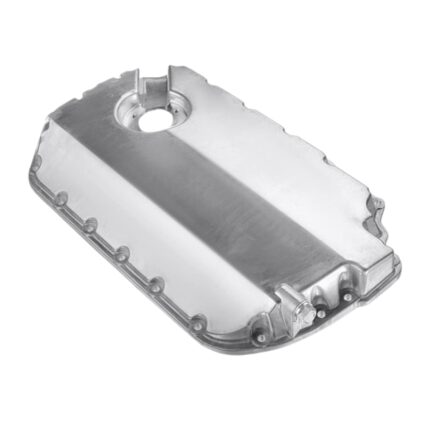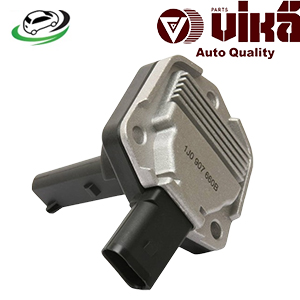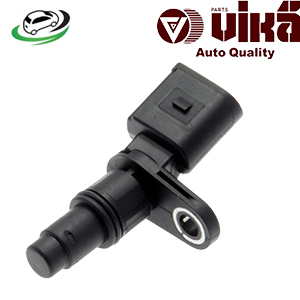Get AUDI B7 RS4 V8/ D3 A8 W12 / VW Touareg 1 TDI Crankshaft/Camshaft Position Sensor 070907601A
The crankshaft and camshaft position sensors are integral components of modern internal combustion engines, particularly in vehicles equipped with electronic control systems. These sensors play a vital role in the engine’s operation, ensuring precise timing of fuel injection, ignition, and valve operation. This article will dive into the crankshaft/camshaft position sensor’s functions, benefits, importance to engine management systems, symptoms of failure, and maintenance tips to ensure optimal performance.
1. Introduction to Crankshaft and Camshaft Position Sensors
A. Crankshaft Position Sensor
The crankshaft position sensor (CKP sensor) monitors the rotational speed and position of the engine’s crankshaft. This information is critical for determining the exact position of the pistons, which is necessary to manage fuel injection and ignition timing. The crankshaft is the engine’s main shaft, converting the linear motion of the pistons into rotational motion, driving the vehicle’s wheels.
B. Camshaft Position Sensor
The camshaft position sensor (CMP sensor) is responsible for tracking the rotation of the camshaft. The camshaft controls the opening and closing of the engine’s intake and exhaust valves. Precise camshaft positioning ensures that the valves open and close at the correct time, corresponding to the engine’s combustion cycle.
In many modern vehicles, these sensors work together, providing real-time data to the engine control unit (ECU) to ensure the engine runs efficiently, delivering the right amount of power, fuel economy, and emissions control.
2. Functions of Crankshaft/Camshaft Position Sensors
Both sensors have distinct but complementary roles in the engine management system. Here’s a breakdown of their primary functions:
A. Crankshaft Position Sensor Functions
- Ignition Timing Control: The crankshaft position sensor determines the exact position of the crankshaft relative to the top dead center (TDC) of the pistons. This data helps the ECU control when to ignite the air-fuel mixture inside the combustion chamber. Precise timing is essential for efficient combustion, avoiding engine knock, and maximizing power output.
- Fuel Injection Timing: Fuel injectors spray fuel into the engine cylinders at specific intervals. The crankshaft position sensor provides the ECU with information on when to activate the injectors based on the crankshaft’s rotation.
- Engine Speed Measurement (RPM): The CKP sensor monitors the crankshaft’s speed and communicates the engine’s revolutions per minute (RPM) to the ECU. This information is vital for controlling engine power and maintaining smooth operation.
B. Camshaft Position Sensor Functions
- Valve Timing Control: The camshaft controls the opening and closing of the engine’s intake and exhaust valves. The CMP sensor helps the ECU ensure that the valves open and close at the precise moment during the four-stroke combustion cycle: intake, compression, power, and exhaust. This synchronization is key to ensuring proper airflow in and out of the engine.
- Cylinder Identification: In engines with variable valve timing (VVT) or multi-valve technology, the camshaft sensor allows the ECU to distinguish between different cylinders. This helps the ECU adjust timing for each cylinder, improving engine efficiency and reducing emissions.
- Variable Valve Timing (VVT) Operation: In modern engines with VVT systems, the CMP sensor provides feedback to the ECU on the camshaft’s position. The ECU adjusts the timing of the camshaft to optimize engine performance, improving fuel efficiency and power output across different RPM ranges.
3. Importance of Crankshaft/Camshaft Position Sensors
Both the crankshaft and camshaft position sensors are essential for the proper functioning of the engine. Together, they ensure that the air-fuel mixture is ignited at the right moment and that the engine’s intake and exhaust valves operate in harmony with the crankshaft’s rotation. Here’s why these sensors are indispensable in modern engines:
A. Precise Timing for Efficient Combustion
The key function of these sensors is to provide the ECU with the necessary data to maintain precise timing for both fuel injection and ignition. Proper timing ensures complete combustion of the air-fuel mixture, which leads to improved engine performance, fuel economy, and reduced emissions.
B. Reduced Engine Knock
By ensuring that the ignition occurs at the correct moment, the crankshaft position sensor helps prevent engine knock, a condition that can cause severe damage to engine components if left unchecked. Knock occurs when the air-fuel mixture ignites prematurely, causing an abnormal pressure wave in the engine’s cylinders. This can lead to piston and valve damage over time.
C. Smooth Engine Operation
The camshaft position sensor ensures that the engine’s intake and exhaust valves open and close at the right time during the engine’s cycle. This helps the engine run smoothly and prevents issues such as misfires, rough idling, and stalling.
D. Variable Valve Timing and Enhanced Efficiency
In engines with VVT systems, the camshaft position sensor provides feedback to the ECU, enabling dynamic adjustments to valve timing. This allows for optimal performance at both low and high RPMs, improving fuel efficiency, increasing power output, and reducing emissions.
E. Diagnostic Data
In addition to their real-time control functions, crankshaft and camshaft position sensors also provide diagnostic data to the ECU. If either sensor detects irregularities or malfunctions, the ECU stores diagnostic trouble codes (DTCs), which can be accessed with an OBD-II scanner. This helps mechanics diagnose engine problems more accurately.
4. Benefits of Crankshaft/Camshaft Position Sensors
The benefits of crankshaft and camshaft position sensors extend to both performance and reliability. Here’s an overview of how these sensors enhance the driving experience:
A. Improved Fuel Efficiency
By ensuring that the engine’s combustion process is optimally timed, these sensors contribute to better fuel efficiency. Proper valve timing ensures that the engine breathes more efficiently, while precise fuel injection and ignition timing reduce fuel wastage.
B. Enhanced Engine Performance
The sensors ensure that the engine runs at peak performance by providing the ECU with real-time data on the crankshaft and camshaft’s positions. This leads to smoother acceleration, improved throttle response, and consistent power delivery.
C. Reduced Emissions
With precise timing control, the engine burns fuel more completely, which reduces the production of harmful emissions such as carbon monoxide, nitrogen oxides, and unburned hydrocarbons. This is critical for meeting stringent emissions regulations and improving air quality.
D. Extended Engine Life
By preventing conditions like engine knock, misfires, and excessive wear on valves and pistons, crankshaft and camshaft position sensors contribute to the longevity of the engine. Proper timing reduces mechanical stress on engine components, resulting in fewer breakdowns and costly repairs.
E. Diagnostic Capabilities
These sensors help with vehicle diagnostics by logging faults in the ECU. Early detection of sensor malfunctions can prevent larger issues from developing, allowing for timely repairs and maintenance.
5. Symptoms of Faulty Crankshaft/Camshaft Position Sensors
Like any component, crankshaft and camshaft position sensors can fail over time. A malfunctioning sensor can cause a range of issues that affect engine performance. Here are common symptoms of a faulty sensor:
A. Check Engine Light
One of the first signs of a failing sensor is the illumination of the check engine light on the dashboard. The ECU will store a diagnostic trouble code indicating a sensor malfunction.
B. Engine Misfires or Rough Idling
A faulty sensor can cause incorrect timing, leading to engine misfires, rough idling, or stalling. This occurs because the ECU is receiving incorrect information about the engine’s position.
C. Poor Acceleration
When the sensor fails, the ECU may not be able to adjust ignition and valve timing accurately, resulting in sluggish acceleration and a loss of power.
D. Engine Stalling or Hard Starting
A malfunctioning crankshaft or camshaft sensor can prevent the engine from starting altogether or cause it to stall while running. The ECU may not be able to determine the correct position of the crankshaft or camshaft, resulting in a failure to initiate combustion.
E. Reduced Fuel Efficiency
When the sensors fail, the ECU may inject too much fuel into the engine or ignite the air-fuel mixture at the wrong time, leading to increased fuel consumption and poor fuel economy.
6. Maintenance and Care for Crankshaft/Camshaft Position Sensors
Maintaining crankshaft and camshaft position sensors is relatively simple but critical to ensuring the engine runs smoothly. Here are some maintenance tips:
A. Regular Inspection
During routine maintenance, have a mechanic inspect the sensors for signs of wear or damage. Heat, oil contamination, and vibration can affect sensor performance over time.
B. Cleaning the Sensor
Sometimes, oil or dirt buildup on the sensor can cause it to malfunction. If a sensor becomes contaminated, it can be cleaned using a suitable electronic cleaner. Make sure to disconnect the battery before cleaning to avoid short circuits.
C. Checking Sensor Wiring
Faulty wiring or loose connections can cause sensor malfunctions. Regularly inspect the sensor’s electrical connections to ensure they are tight and free from corrosion or damage.
D. Replacing the Sensor
Crankshaft and camshaft position sensors can wear out over time, particularly in high-mileage vehicles. If a sensor fails, replace it promptly to avoid further damage to the engine.
7. Conclusion
Crankshaft and camshaft position sensors are indispensable components in modern engines, playing a key role in ignition timing, fuel injection, valve timing, and overall engine performance. These sensors ensure the engine runs smoothly and efficiently while reducing emissions and improving fuel economy. Regular maintenance, prompt replacement of faulty sensors, and diagnostic checks are essential to ensuring the longevity and reliability of your vehicle’s engine.
Follow us on Facebook for more parts.




Reviews
Clear filtersThere are no reviews yet.